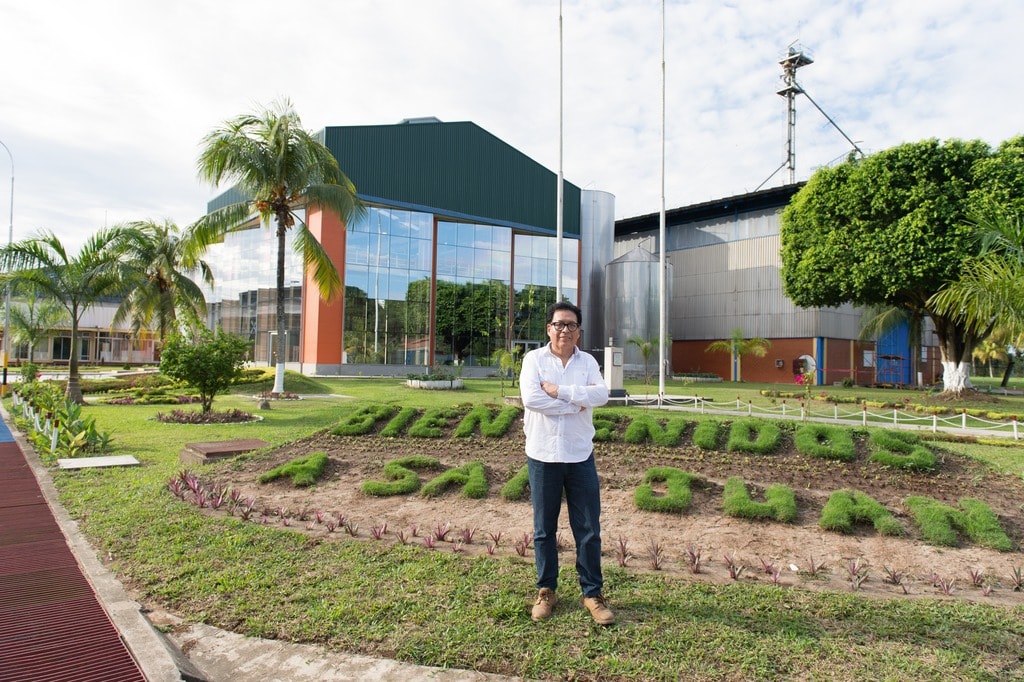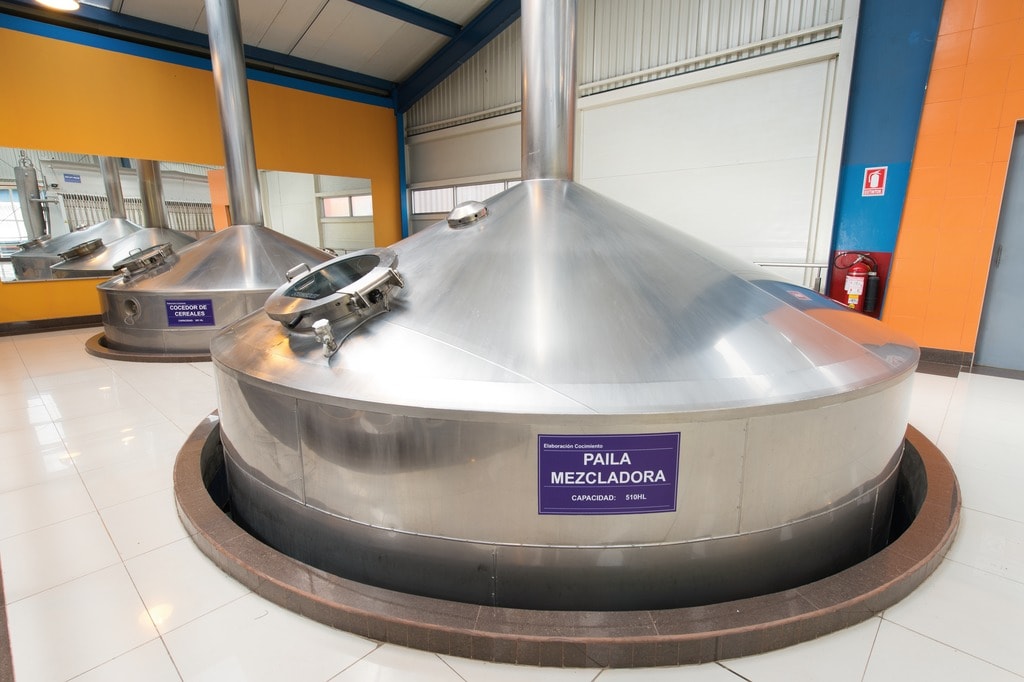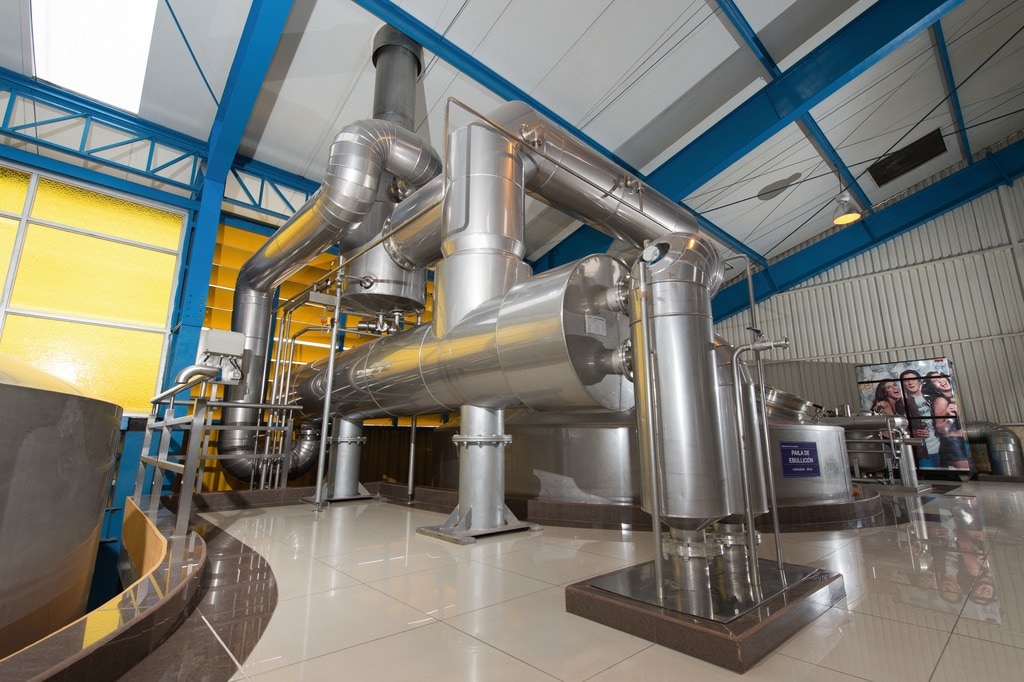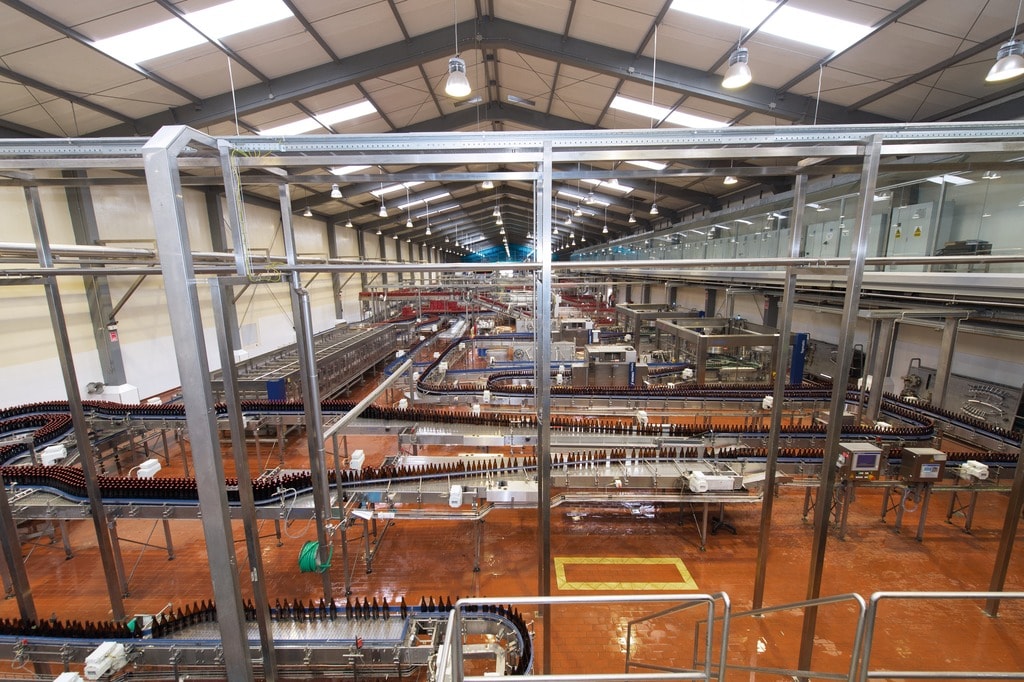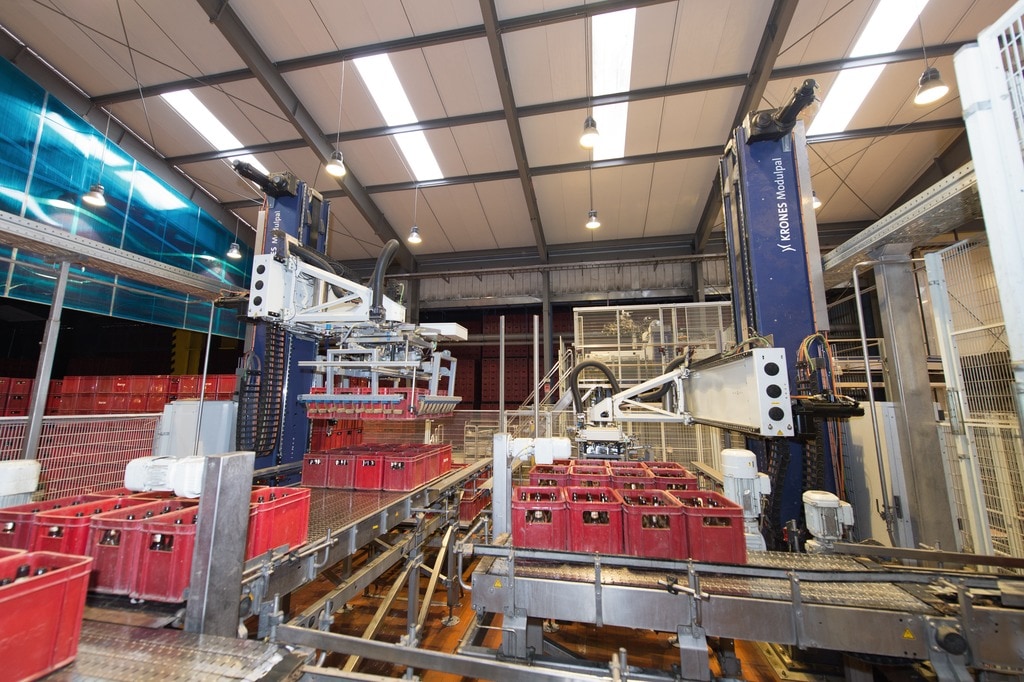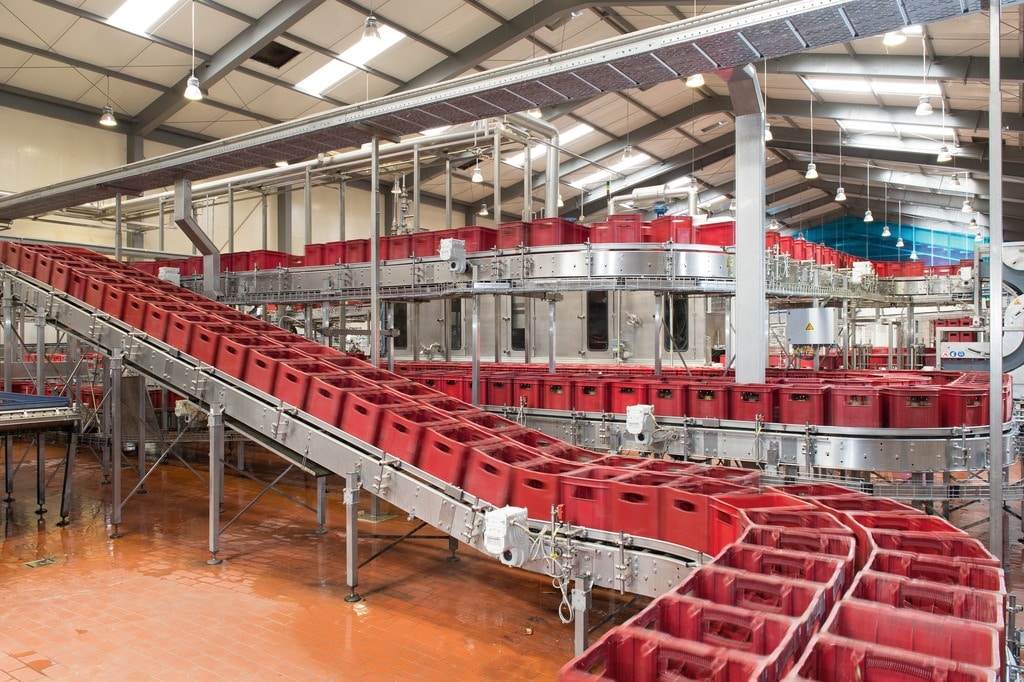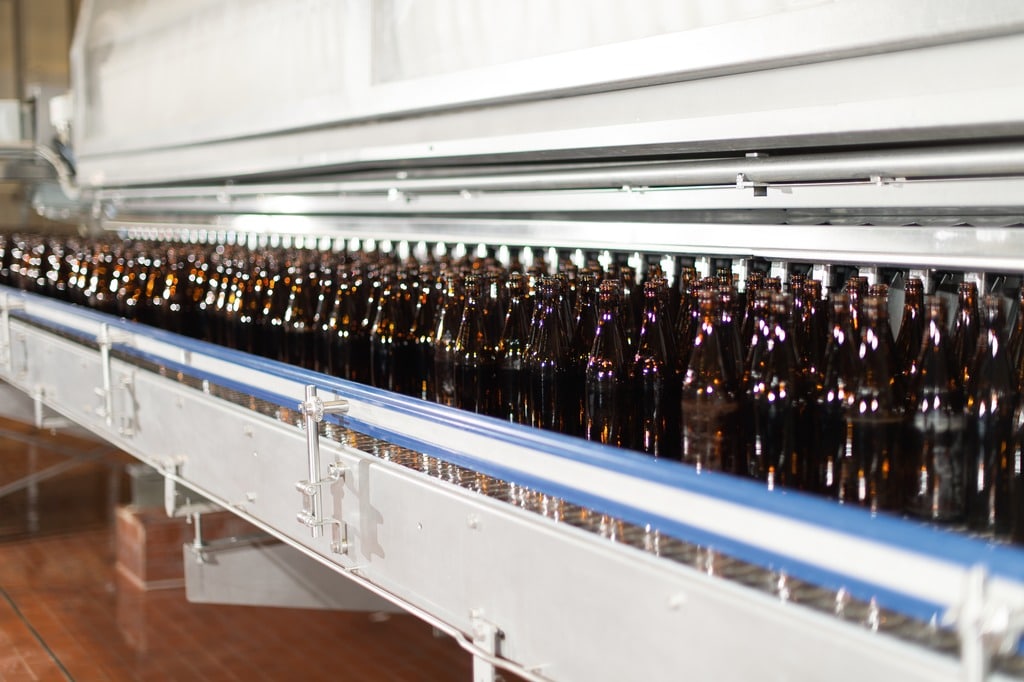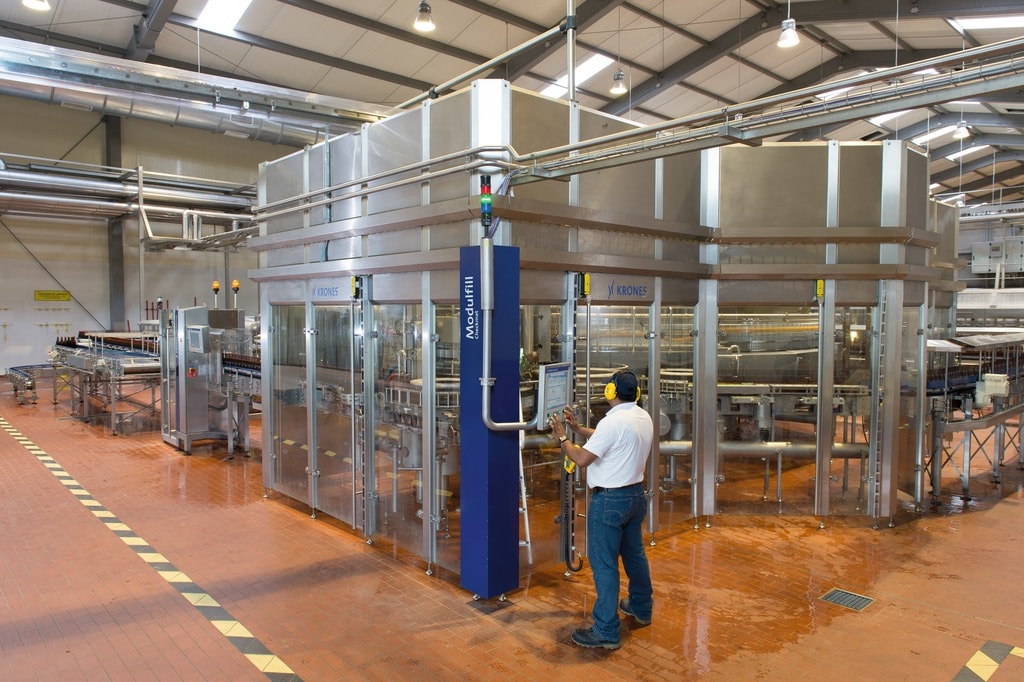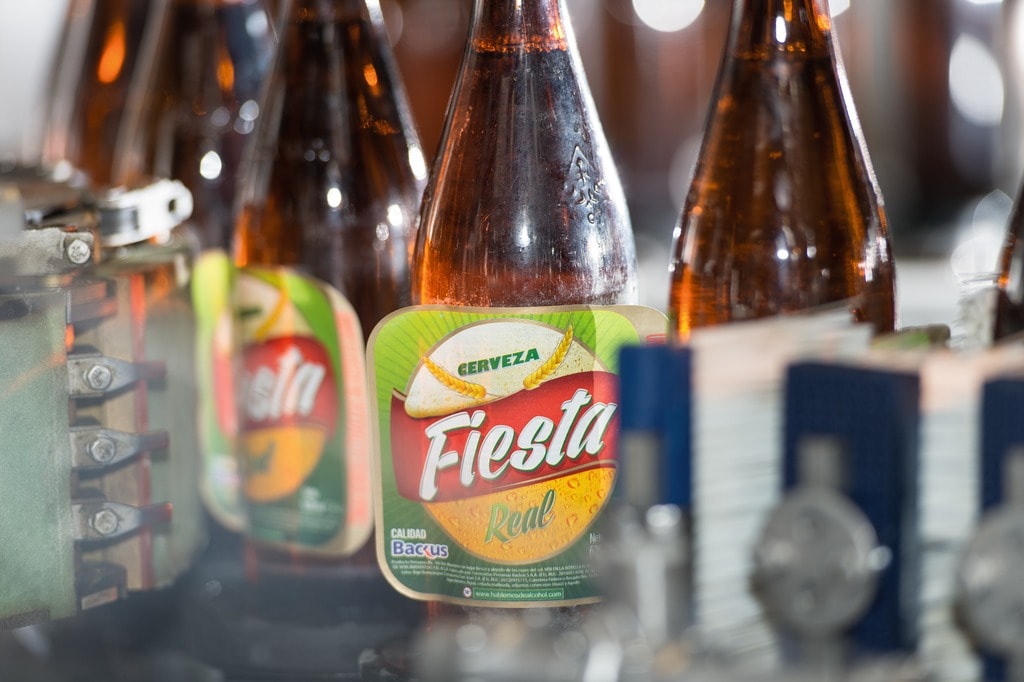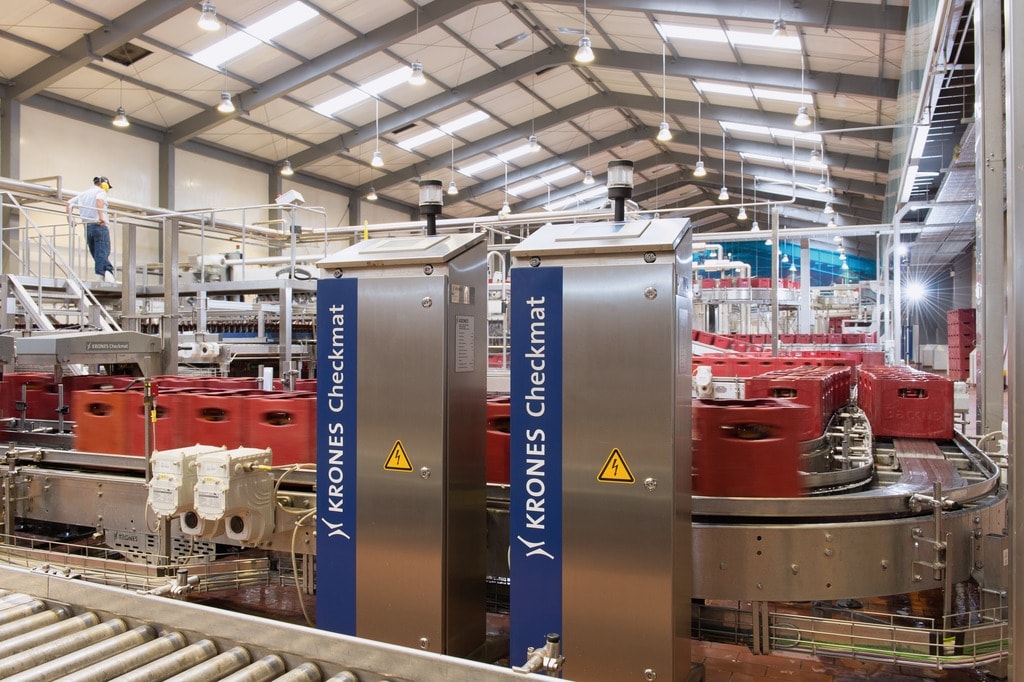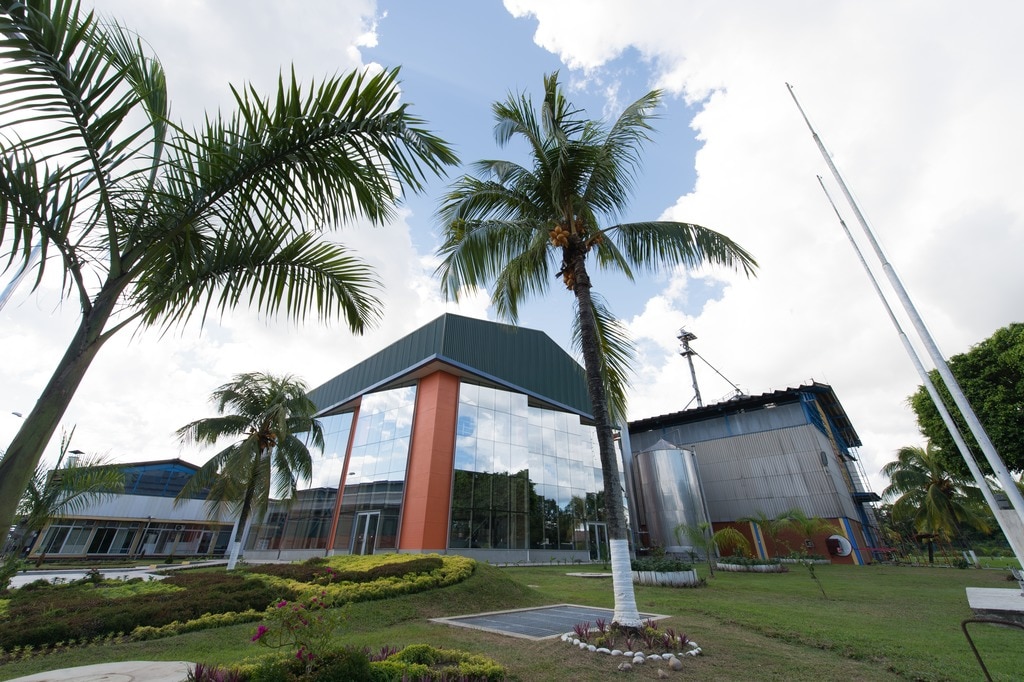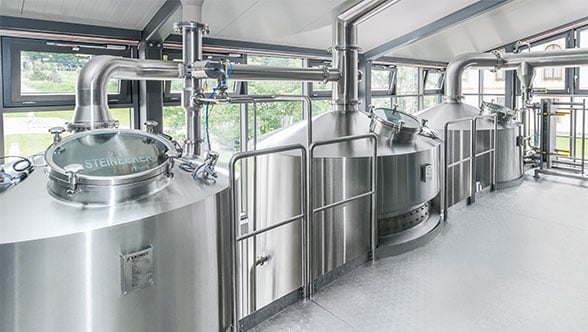It is quite obvious that this isolated location poses some special challenges, both for the brewery’s supply lines and also, of course, for beer distribution. Therefore San Juan had the existing Steinecker brewhouse refurbished and also took delivery of a new returnable-glass line from Krones, rated at 60,000 bottles an hour. Just getting the new machines to the plant presented quite a few obstacles.
Single-column palletising Robot in 2013 came a major step forward: San Juan had the existing Steinecker brewhouse completely refurbished. There Krones installed a mash tun, a cereal cooker and a whirlpool. The wort copper is equipped with a Stromboli internal boiler. The Boreas wort stripping system uses nitrogen as the stripping gas, so as to reduce the content of free DMS. A vapour condenser for energy recovery has been linked up to the boiling equipment.
In its old brewhouse, San Juan had still been working with a lauter tun for lautering the wort. Now the brewery decided to install a mash filter from Steinecker. This new mash filter is being produced in cooperation with the Landaluce company, and the parent company Backus had already had one of these installed in its other brewery in Arequipa one year earlier. The new brewhouse, which has been dimensioned for 525 hectolitres per brew, produces fourteen brews a day. The process has been automated throughout – no operator interventions whatsoever – and produces top-quality, clear wort. The Steinecker mash filter utilises water compression instead of air compression, which makes for uniform distribution of the grain bed, with concomitantly homogeneous spent-grain washing. Water consumption, too, is reduced, thanks to better removal of the residual extract with just a small amount of sparging water.
The filler’s adventurous river cruise
After the brewhouse had been taken care of, it was time to upgrade the bottling hall.
However, there was one “minor” obstacle: the high-performance filler ordered by San Juan has a diameter of 6.5 metres. The transport crate it is packed in then has outer dimensions of 8.15 metres times 7 metres times 3.4 metres (height) and weighs 33 tons. Although there is in fact a road link between the country’s capital Lima on the Pacific coast and Pucallpa located 150 metres above sea level, this does inevitably go over the Andes. On narrow tracks and over steep passes, it climbs up to the Ticlio pass, at 4,818 metres (15,900 ft.). It’s a distance of 750 kilometres to travel, and even in a passenger car you need up to 16 hours for it. Even though it was possible to transport all of the line’s kit (and that included the bottle washer, which had been divided up into segments for this purpose) along this road, there was no way of also sending the gargantuan crate holding the filler on this journey.
So Krones chose a different path: on a low-loader escorted by police from Neutraubling to Antwerp, and from there in March 2014 by freighter to Houston, Texas, where the filler was reloaded onto another ship, which took it via the Caribbean and the Atlantic Ocean right up to the Amazon estuary at the Brazilian city of Belém. From there, it travelled for several days up the Amazon until it reached Iquitos in Peru, where it was again transferred onto a smaller vessel, which finally negotiated the rest of the Amazon and the Ucayali until it reached the little river port of Pucallpa. By June, all machines had safely arrived on site, so that erection work on the new Krones line could start. December 2014 then saw the first filled bottles coming off the line.
Rated at 60,000 bottles an hour
The new returnable-glass line from Krones is rated at 60,000 0.65-litre bottles an hour, and starts with the bottle crates being unloaded from the pallets by two Modulpal machines operating in parallel. When needed, a Pressant bulk glass sweep-off depalletiser with a high-level discharge feeds new bottles into the line. The crates, once unloaded, are on two lanes passed to a Smartpac, which unpacks 18 of them simultaneously. The empty crates are then cleaned in a crate washer, and sent either to the Smartpac packer or to another Modulpal. The unpacked bottles travel to the double-end Lavatec D5 bottle washer. Downstream, a first Accutable provides the requisite bottle buffering. An empty-bottle inspector checks the glass bottles and is electronically block-synchronised with the filler.
Continual monitoring
The Modulfill HES, with 198 filling valves and double pre-evacuation, is the Krones filler best suited for dependably filling beer in a variety of bottle formats while ensuring low oxygen pick-up and maximised filling accuracy. A VarioClean CIP system plus an elaborate foam-cleaning feature handle cleaning of both the filler’s interior and exterior, meeting top-notch hygiene stipulations. A Checkmat then inspects the bottles for correct fill levels, after which they are passed through a LinaTherm warmer so as to prevent condensation. A second Accutable downstream provides adequate buffering before the bottles are divided up among two lanes and spaced by two Glideliner systems. Subsequently, the bottles enter one of the two Linadry machines and one of the two Topmatic labellers. These latter each possess three cold-glue stations for shoulder, neck and back labels. “The labellers from Krones are simply great,” lauds the brewery’s director. Downstream of yet another Accutable buffer, a Smartpac packs the bottles into the waiting crates, which in their turn are on two lanes inspected for completeness by two Checkmat machines. Now two Modulpal units installed in parallel stack the crates of fulls onto pallets, whose loads are then stabilised by a pallet bander, after which the pallets are taken to the warehouse. An LDS line documentation system has been integrated for monitoring and logging the line data.
Wouldn't that be something for you too?
